Fender Jaguar vs Mustang: What’s the difference?
We dive into the nitty gritty of differences and similarities between Fender’s unique Jaguar and Mustang models
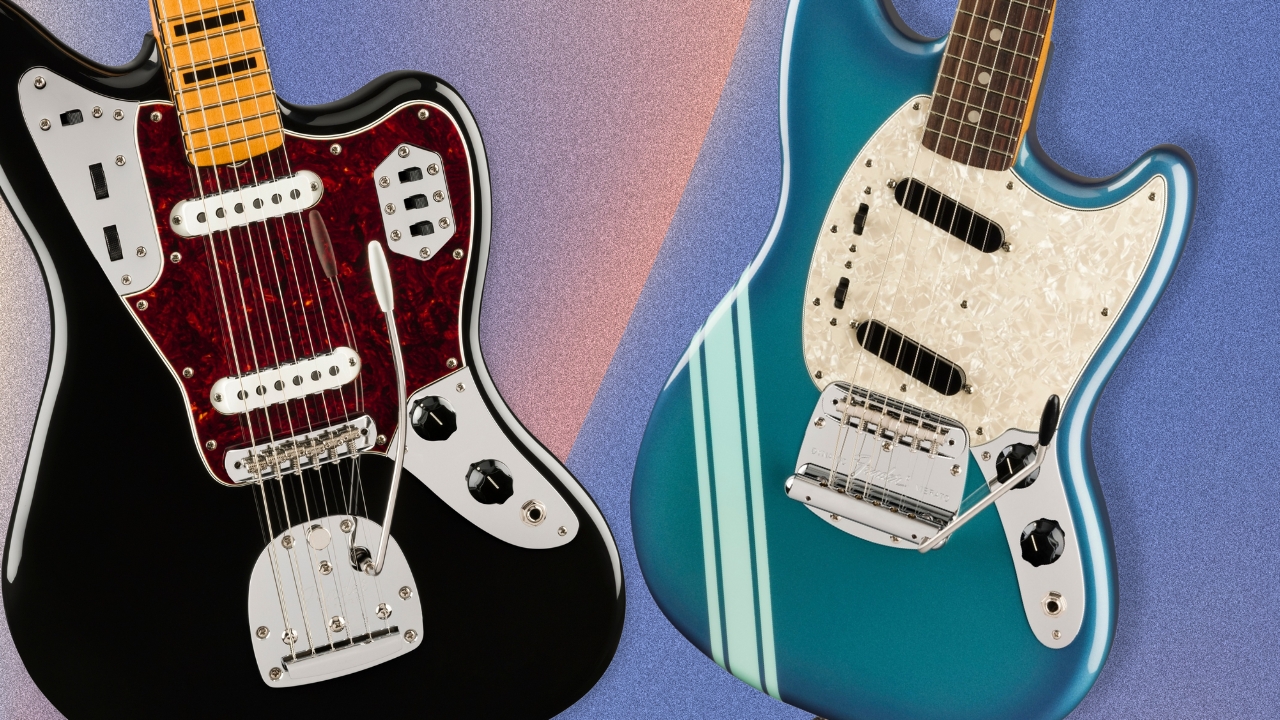
While the Stratocaster and Telecaster might reign supreme in terms of popularity amongst Fender’s line-up of electric guitars, the Jaguar and Mustang are still much loved by a whole range of players. Introduced in 1962 and 1964 respectively, they both offer a shorter scale than most other Fender guitars, and a range of different tones; but what sets these two guitars apart? And if you’ve been considering picking one up, which is the right model for you?
Both guitars are well known for being covered in all sorts of switches and knobs. While this has no doubt confused and maybe even put some players off, it’s also a huge part of what makes them sound so unique, and has helped deliver some classic tones over the last 60 years.
Here, we’re going to pit these offset guitars against each other to compare and contrast things like tone, design, playability and more. Like with all of Fender’s other models, there have been various versions of both guitars over the years. Even today there are lots of options to pick from. To make things easier and fairer, for this feature we will be looking at vintage spec’d versions of both guitars, like the ones seen in Fender’s Vintera and Vintera II ranges.
Fender Mustang vs Jaguar: At a glance

Probably the most noticeable difference between the Jaguar and the Mustang at first glance is the body shape, with the latter being a little more compact. They’ve got different types of pickups too – they’re both single coils, but you’ll notice that the Jag’s has small metal claws around them, as we’ll look at later, and produces quite a different sound.
They both have different controls and circuits too, which again contributes towards the different tones that these guitars are capable of producing. The hardware, particularly the trem systems differ too, which gives them a different feel from one another but also has quite an impact on how they look. They do both share a 24” scale length though, which is shorter than Fender’s usual 25.5”, so you might notice a similar feel in your fretting hand. The specs below are based on the Vintera II 70s models.
Fender Vintera II 70s Jaguar
- Body: Alder
- Neck: Maple
- Fingerboard: Maple
- Frets: 22, Vintage Tall
- Pickups: Vintage-Style '70s Single-Coil Jaguar
- Neck Profile: Late '70s “C"
- Buy from Fender
Fender Vintera II 70s Mustang
- Body: Alder
- Neck: Maple
- Fingerboard: Rosewood
- Frets: 22, Vintage Tall
- Pickups: Vintage-Style '70s Single-Coil Mustang
- Neck Profile: Early '70s “C"
- Buy from Fender
Fender Jaguar vs Mustang: Switching systems
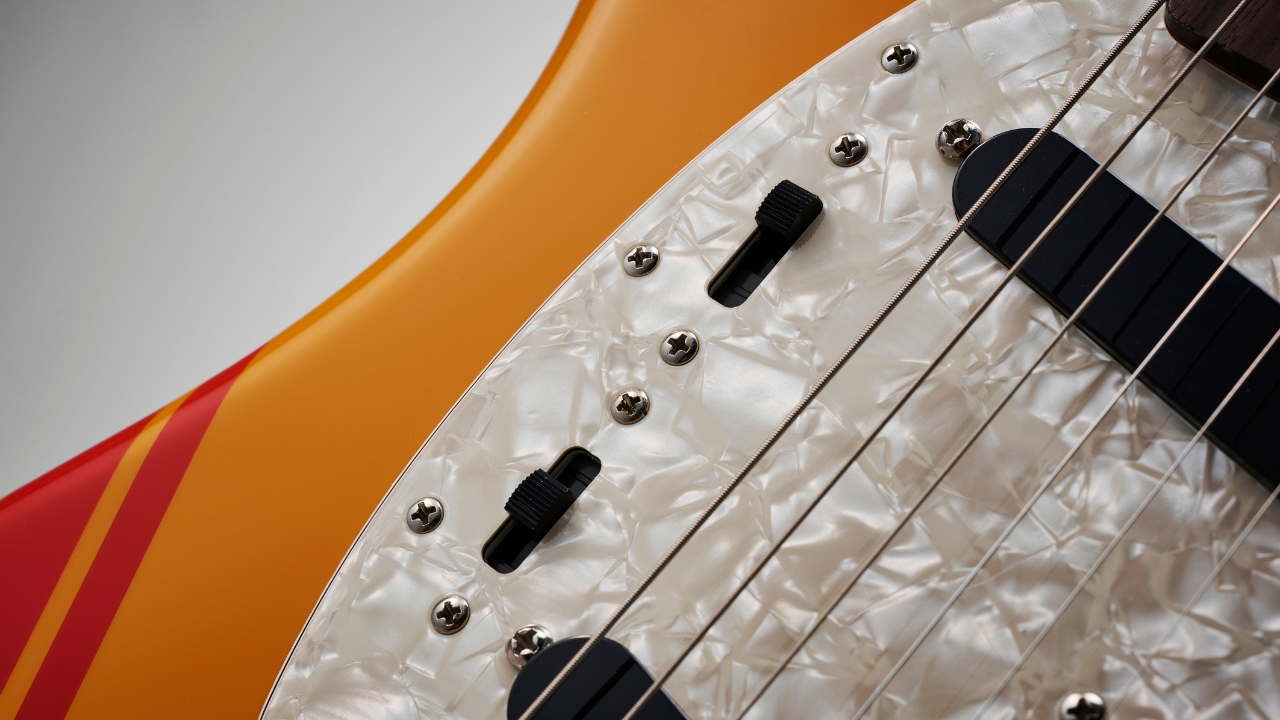
Both guitars utilize single coil pickups, however they’ve both definitely got their own tonal characteristics and have very different switching systems. Firstly, let’s go through what all the switches do.
On a Jaguar, you’ve got three switches placed near the lower horn. Looking at the guitar face-on, the right hand switch turns the neck pickup on/off, the middle is on/off for the bridge pickup and the left-hand switch is a ‘strangle’ switch that cuts out some of the lower frequencies across all pickups. Near the input, you’ve got master volume and master tone knobs.
Get The Pick Newsletter
All the latest guitar news, interviews, lessons, reviews, deals and more, direct to your inbox!
Then at the top, you’ve got a single switch and two roller knobs. When the switch is up, you’re on the lead circuit (which is what the master knobs and three switches control) - when it’s down, you’re on the Jag’s rhythm circuit. Here, only the neck pickup is engaged and, since it’s going through a different circuit, it sounds different – much darker and mellower. The two roller knobs are then tone and volume controls for this.
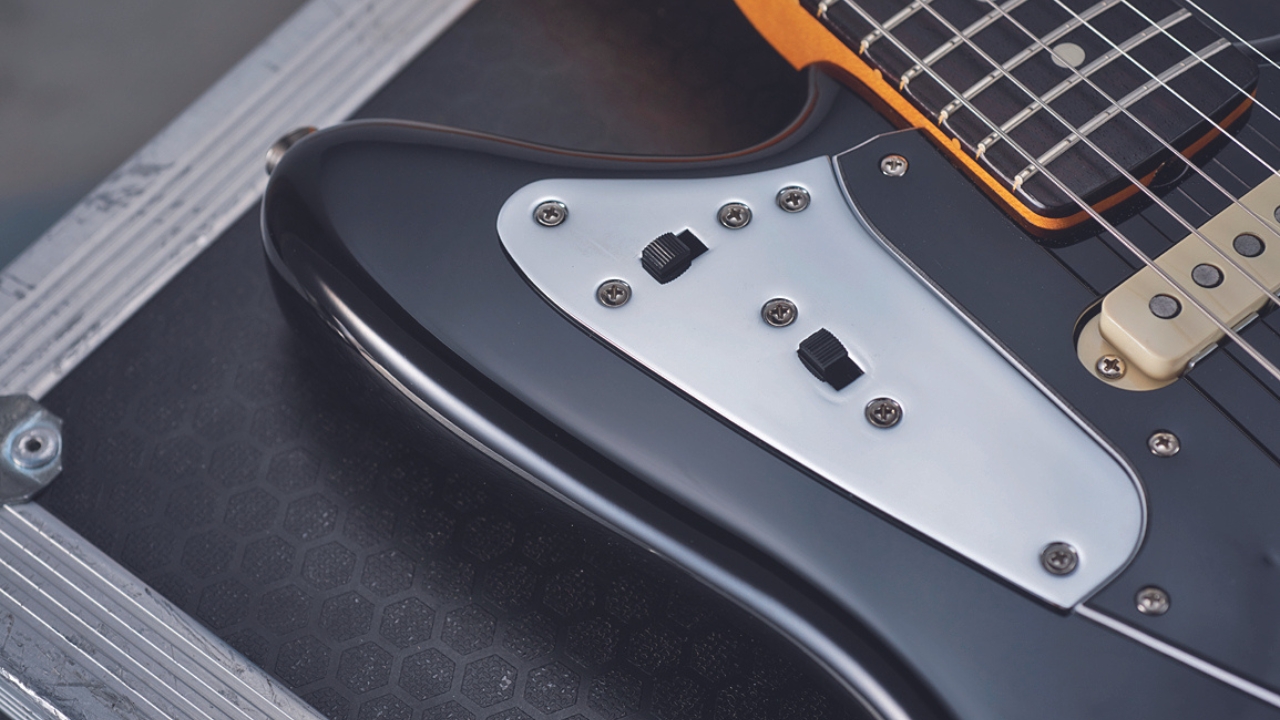
The Mustang has a simpler switching system. Each pickup has a three-way switch above it. When the switch is in the middle, that pickup is off. When it’s either to the left or the right, then that pickup is on. Now, it’s a three-way switch for a reason – if the switches on both pickups are in the same position then they’re both on and in phase. If the switches are in opposite directions (i.e. one is switched to the left, and the other to the right), then they’re both on, but they are out of phase. Essentially, this gives you four different tones. The two knobs near the input are master volume and tone controls.
Verdict: Draw
Difficult to pick a winner here. They both do different things and serve the guitar that they’re on well. You can probably do slightly more with the Jag – good for those that like options; less so for those that want a simpler system!
Fender Jaguar vs Mustang: Tone

The different pickups fitted in both the Fender Jaguar and Fender Mustang mean that they sound different. A Jag will usually be brighter sounding and have a hotter output, meaning you can push a tube amp to overdrive naturally more easily. It’s also got a lot of that Fender jangle that people talk about – it’s clear, defined and bright. The metal claws around the pickups help enhance the top end frequencies and also reduce hum slightly.
You’ve then got the strangle switch, which takes out some bottom end, and even some mid frequencies – this sound won’t work for everything, but it’s nice to have. The rhythm circuit is great for jazz, or anything that requires a much darker tone. Pairing this with a nice fuzz pedal can yield some really cool sounds too.

Mustangs on the other hand sound a little warmer, almost woody sounding, and thinner. You can even get a little twang out of it – almost like a Tele. You’ve then got the honky out of phase sounds possible with the three-way switches. These might not be useful for your everyday sort of tones, but they’re handy if you want a range of different sounds at your disposal. There’s also a slightly percussive element to the attack of a Mustang – things like how the amp or pedals you’re using compress will effect this, but in many of the pickup positions, there’s something cool there.
Both guitars can sound great clean and distorted. It’s worth noting though that many of the grunge players of the ‘90s that used these guitars did modify them to feature humbuckers instead of single coils.
Verdict: Draw
Which one is the winner will really depend on your personal taste. Both have their benefits, and both can produce a great range of sounds. For me personally, the Jag edges it - it’s a little fuller sounding, clearer and I like the brighter, hotter output.
Fender Jaguar vs Mustang: Design & hardware
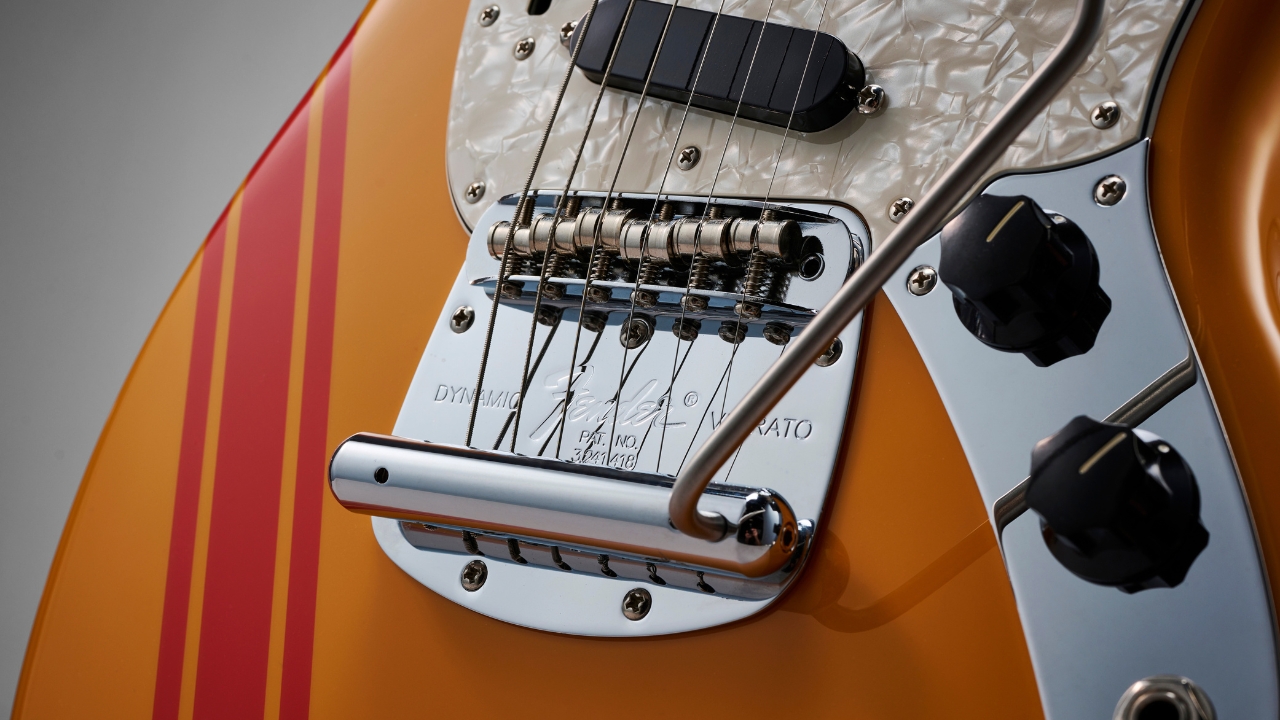
A big difference in the design of these two guitars is the body shape – the Mustang is noticeably smaller. For those that like a more compact instrument – particularly smaller players, or even kids, then this will be a plus. It being smaller also means it weighs a little less on average (the Jaguar also has an additional metal plate for the rhythm circuit which adds more weight), so if you’re looking for a light guitar, then the Mustang might win you over there.
The switches on the Jaguar are a little more out of the way. Again, this can go either way – some might like that as there’s less danger of knocking them whilst playing, whereas others might want them closer to hand. On the Mustang, the switches are right by the pickups, but in the heat of the moment, playing live, they’re not the easiest to adjust quickly.
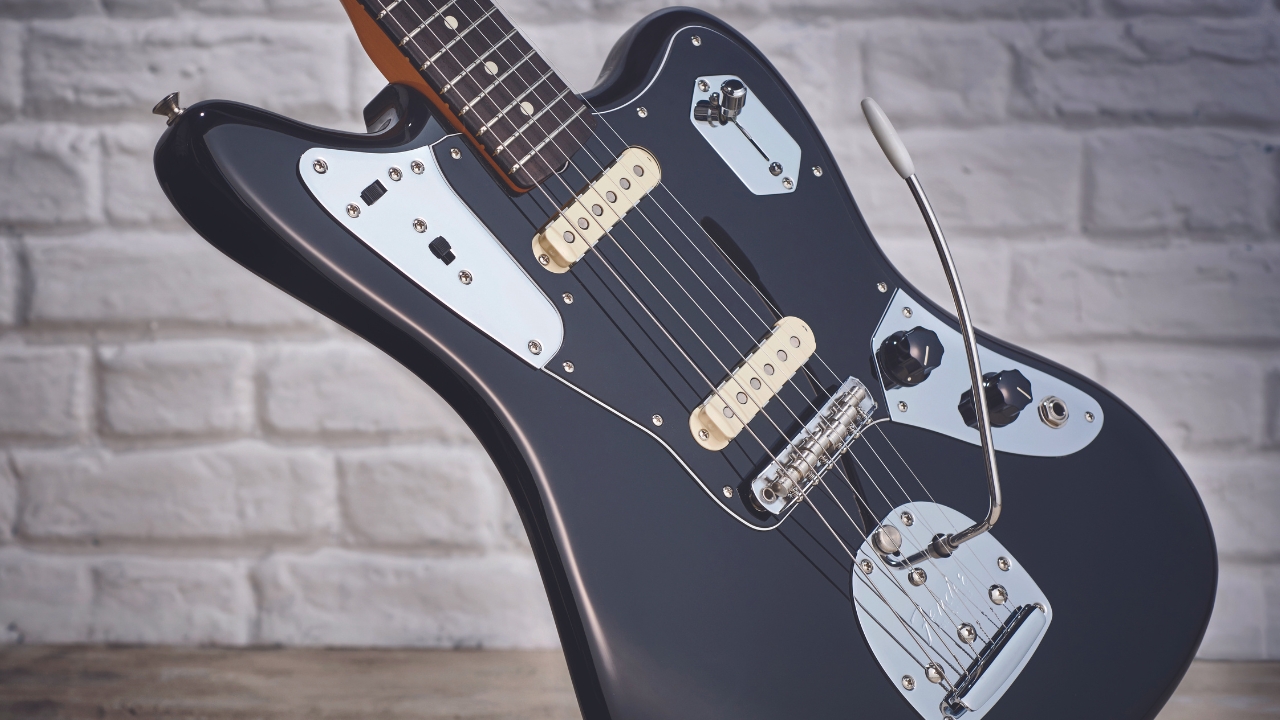
The bridge vibrato systems are different too. The Mustang has a floating tremolo unit – simply place the arm in the top-mounted hole and you’re ready to go. The arm then moves the bar which the strings are strung through so you get a nice and smooth movement which is really easy to control. Because you’re more in contact with the strings, you can get quicker movements in pitch.
The Jaguar usually has a longer arm, which changes the feel of it somewhat. The arm also pops into a small hole on the bridge plate which moves a piece underneath, which is connected to the strings. The movement is a little slower and more gradual than on the Mustang.
Winner: Jaguar
Again, it’s a close one, and for many players the Mustang will win. The Mustang does have a lighter and smaller body which will no doubt be a draw to some. However, the slower, more gradual movement of the vibrato system on the Jaguar is a winner, as is the more practical (for me…) layout.
Fender Jaguar vs Mustang: Playability
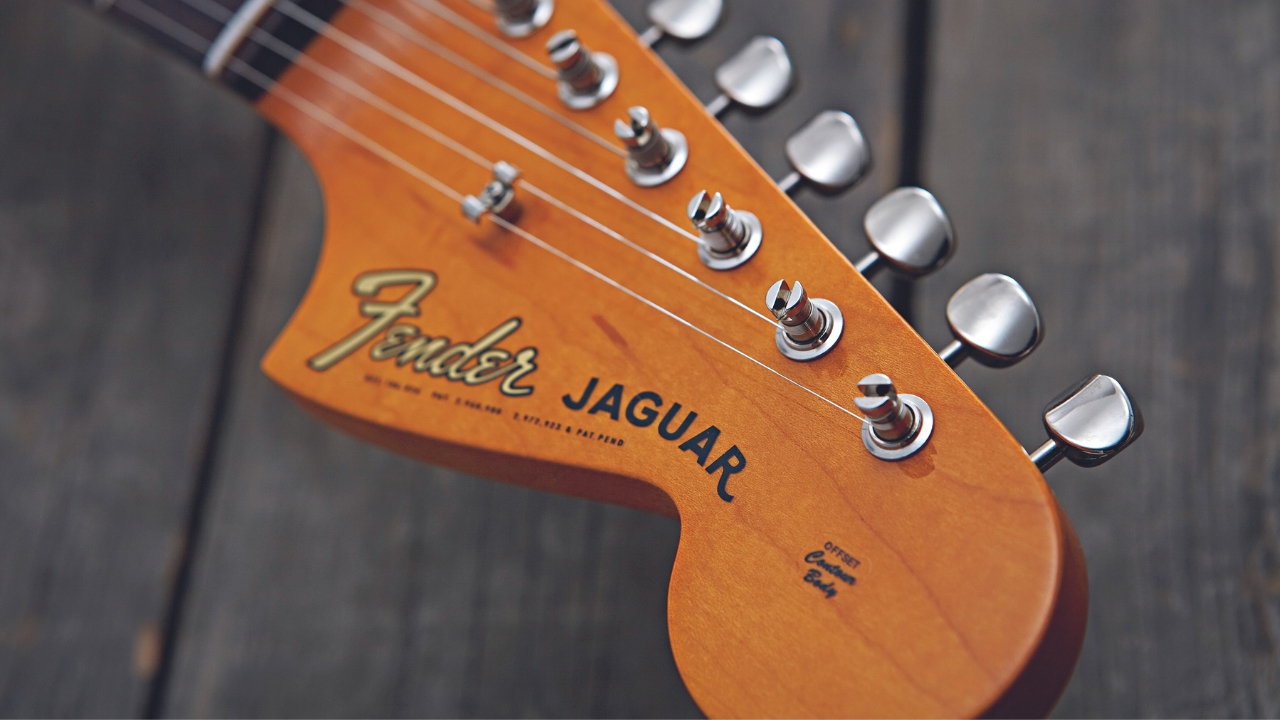
Both guitars have a shorter 24” scale length, so there isn’t much of a difference in terms of what your fretting fingers feel. The neck profile will play a big part in playability, but again, that will depend on the particular model you opt for. Some players might have different experiences, but I tend to find that a Jaguar trem holds its tuning better after use than a Mustang.
Both guitars are comfortable to play sat down as both bodies have a cut in the waist to place on your knee. Standing up, both are fine, though again – it’s worth remembering that generally, Mustangs are lighter, if weight is an issue.
Winner: Draw
They’re very similar, and most differences in playability will come down to the particular version you choose. Whilst the Jag vibrato system holds its tuning well, the Mustang is lighter.
Fender Jaguar vs Mustang: Verdict
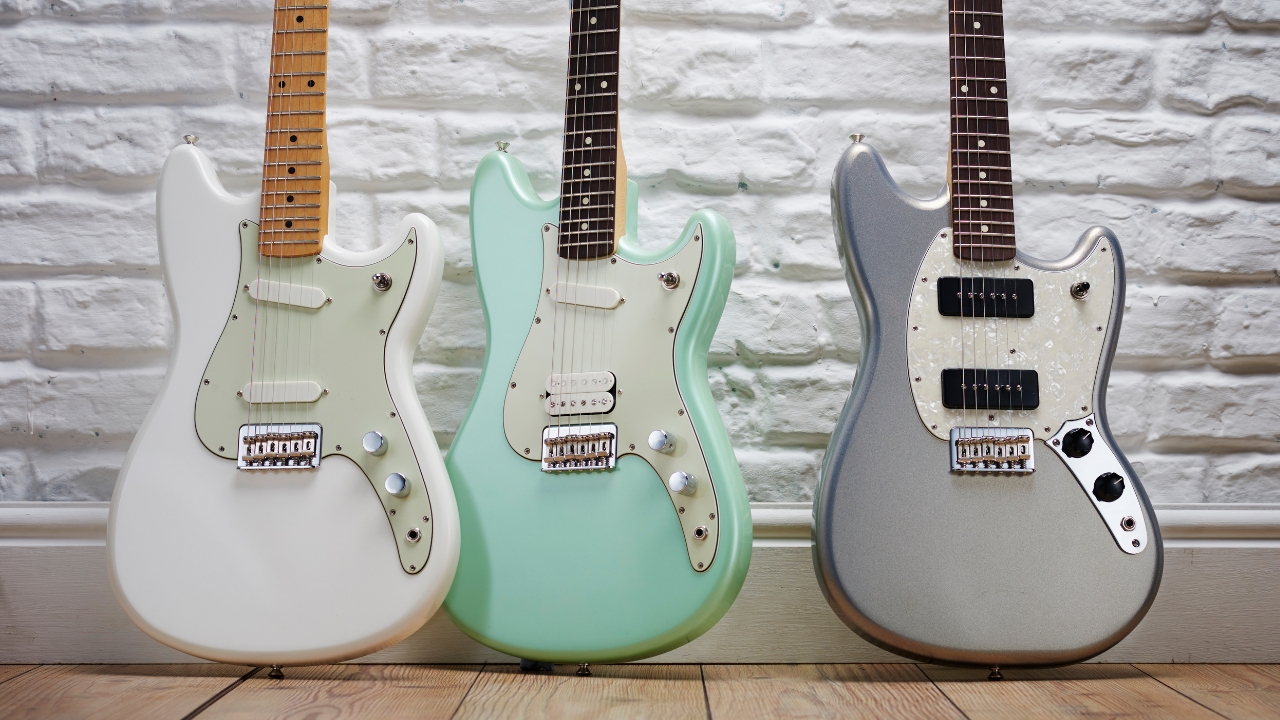
The Fender Jaguar and Mustang are both great guitars, and they both offer tones that you can’t get with anything else. The Jaguar definitely has a nice bright jangle to the sound, along with clarity and fullness, whereas the Mustang is a little warmer but also thinner sounding. Those honky out of phase sounds are also really interesting.
The switching systems on both guitars are completely unique, and once you know what everything does, are actually really intuitive and easy to use. Which one is easier to navigate and use in a live scenario will depend on your playing style, but they’re both very different to a simple three-way pickup selector.
If you’re seeking a light and more compact guitar, the Mustang is your friend here, but it’s hard to ignore how great the offset Jag looks! Both are really cool guitars though and they present a nice alternative for players seeking something different to the classic Strat and Tele models.
Fender Jaguar vs Mustang: Recommended models
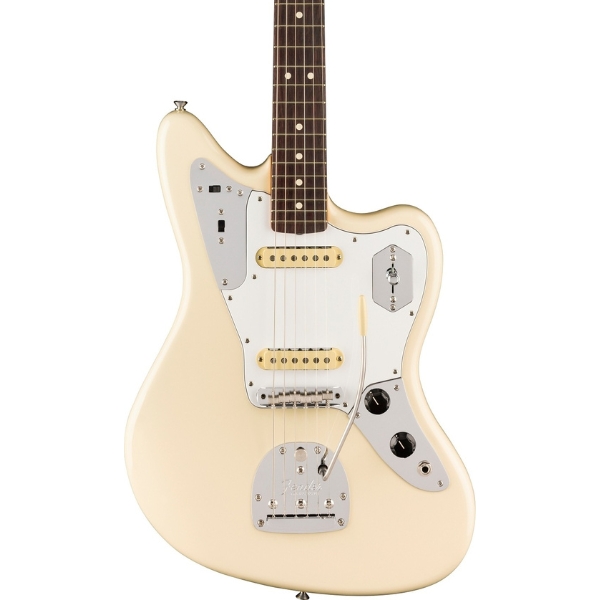
Probably the finest Jag we’ve ever had our hands on, this Fender Johnny Marr Jaguar signature model with extended switching features and hefty neck profile is the cream of the crop when it comes to the expressive instrument that is the Jag.
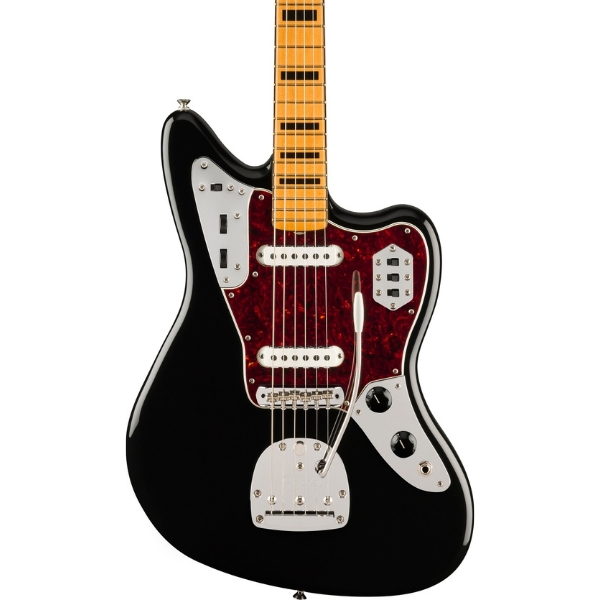
As well as looking incredible, the Fender Vintera II 70s Jaguar features all of those classic Jag tones with an incredibly playable neck. The Maple on black with chrome plating is certainly an unusual look, but we're suckers for it it.
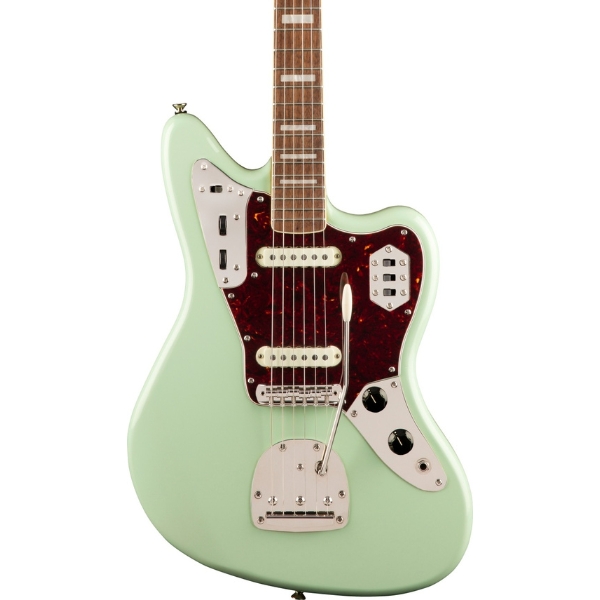
If you want Jag guitar sounds on a budget, the Squier Classic Vibe Jaguar packs that chimney, jangly guitar tone in a package that won’t cost you the earth. It’s not quite as nice as the more expensive models of course, but it’s a perfect upgrade platform.
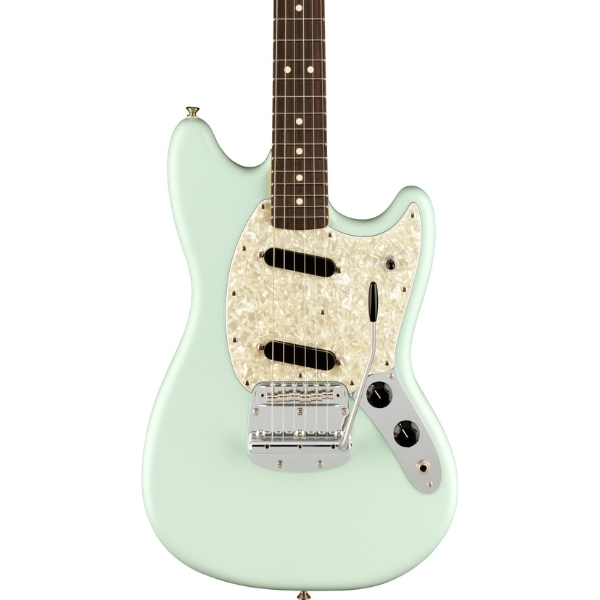
With its zesty pickup tones, stable tremolo, and easy playability the Fender American Performer Mustang is everything a great Mustang should be. Lightweight and well-balanced, this lively guitar delivers an inspiring and articulate sound.
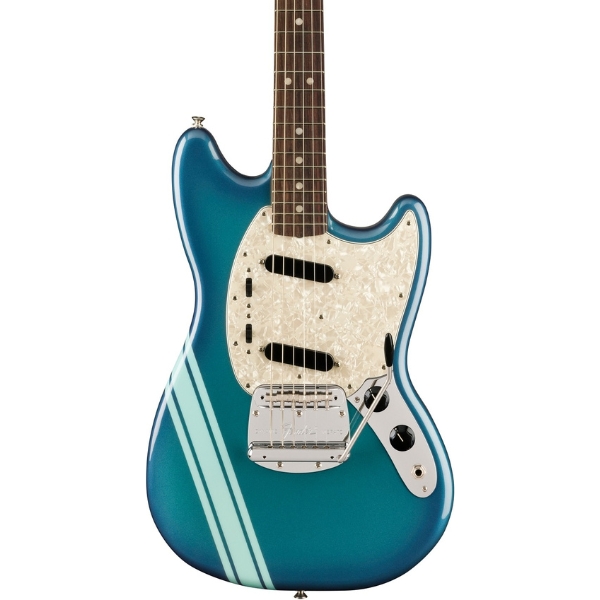
The Fender Player Mustang gives you a sharp top end that goes great with grunge fuzz tones and a crunchy tube amp. The lack of tremolo means that the tuning stability is rock solid, and the comfortable scale makes it eminently playable.
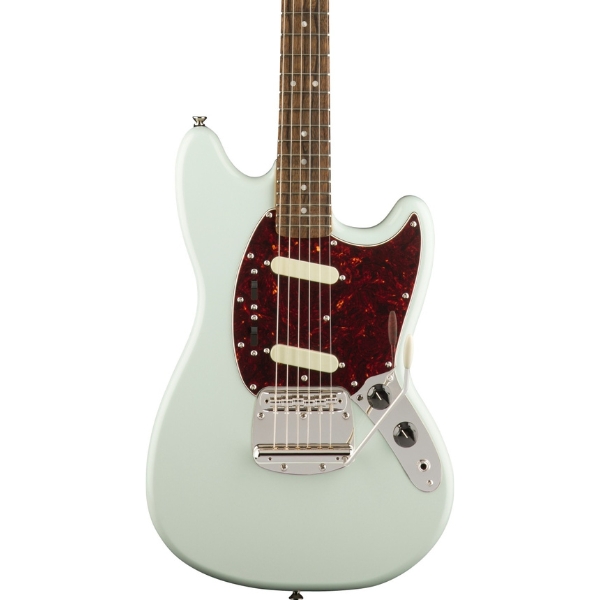
For great value grunge tones, it’s hard to look past the Squier Classic Vibe 60s Mustang. The thin, comfortable neck profile makes it a great option for beginner players getting started on electric, and it’s an excellent upgrade platform.
After spending a decade in music retail, I’m now a freelance writer for Guitar World, MusicRadar, Guitar Player and Reverb, specialising in electric and acoustic guitars, bass, and almost anything else you can make a tune with. When my head’s not buried in the best of modern and vintage gear, I run a small company helping musicians with songwriting, production and performance, and I play bass in an alt-rock band.
- Matt McCrackenJunior Deals Writer
“More people play stop-tails than guitars with locking tremolos. We dig both”: EVH delivers on its hardtail promise and launches the Wolfgang Standard T.O.M. – which vows to take Eddie's legacy to new heights
“What blew me away was that everyone wanted the curly maple top. People were calling, saying, ‘I’ve got to have the bird inlays’”: Paul Reed Smith on raising the Standard 24, finally cracking the noise-free guitar and why John Sykes is a tone hero








![[from left] George Harrison with his Gretsch Country Gentleman, Norman Harris of Norman's Rare Guitars holds a gold-top Les Paul, John Fogerty with his legendary 1969 Rickenbacker](https://cdn.mos.cms.futurecdn.net/TuH3nuhn9etqjdn5sy4ntW.jpg)


